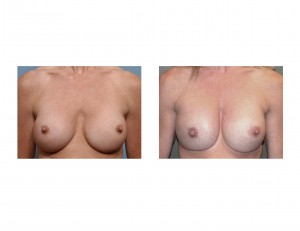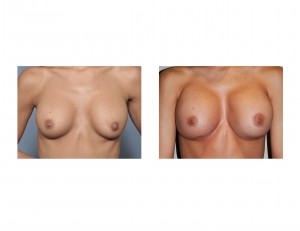Background: The choice of implant size is often the most important issue that every women ponders before her breast augmentation procedure. While there is no exact science to making that selection, important considerations include breast and implant base diameters, the amount of breast mound skin and what final breast shape (round vs. tear drop) does the patient desire.
Despite the many variables involved and its inexact science, the majority of breast augmentation patients are usually happy with their final breast size and shape. For those who aren’t, it is usually due to too small of a breast implant size rather than one that is too large.
When a breast augmentation implant size turns out to be too small, what size increase should one go to? In theory, changing an existing breast implant size should be more predictable as their is a known effect based on what the existing implant has created. But thinking that going up in implant size 25 or 50ccs is going to make a visible difference will be disappointed. That may create more firmness or a little more roundness but not a visible size change.
Case Studies: This 44 year-old female had saline breast implants of 350cc placed two years previously. She had always been unhappy with her implant size and wanted to go up at least a 1/2 cup size if not more. When discussing a new implant size, she did not want to go bigger than 425cc (+75ccs or a 21% volumetric change) of which she was advised that would not be enough. She did not take thsi advice and ended up unhappy again…and this time with no more funds for further surgery.

This 35 year-old female had silicone breast implants of 400cc placed a year previously. While she was initially pleased with the size, given that she started with virtually a flat chest, she came to realize she wanted a D cup breasts not small C cup breasts. She opted for 700cc implants (+300ccs or a 75% volumetric change) and was very pleaed with the result.

Case Highlights:
1) Primary breast augmentation achieves a satusfactory size result in most cases.
2) Unhappiness with breast implant size is most commonly due to be less full than desired not bigger in most cases.
3) When exchanging breast implants for a bigger size, think ratios of change and choose a minimum of a 30% to 50% volumetric increase.
Dr. Barry Eppley
Indianapolis, Indiana


